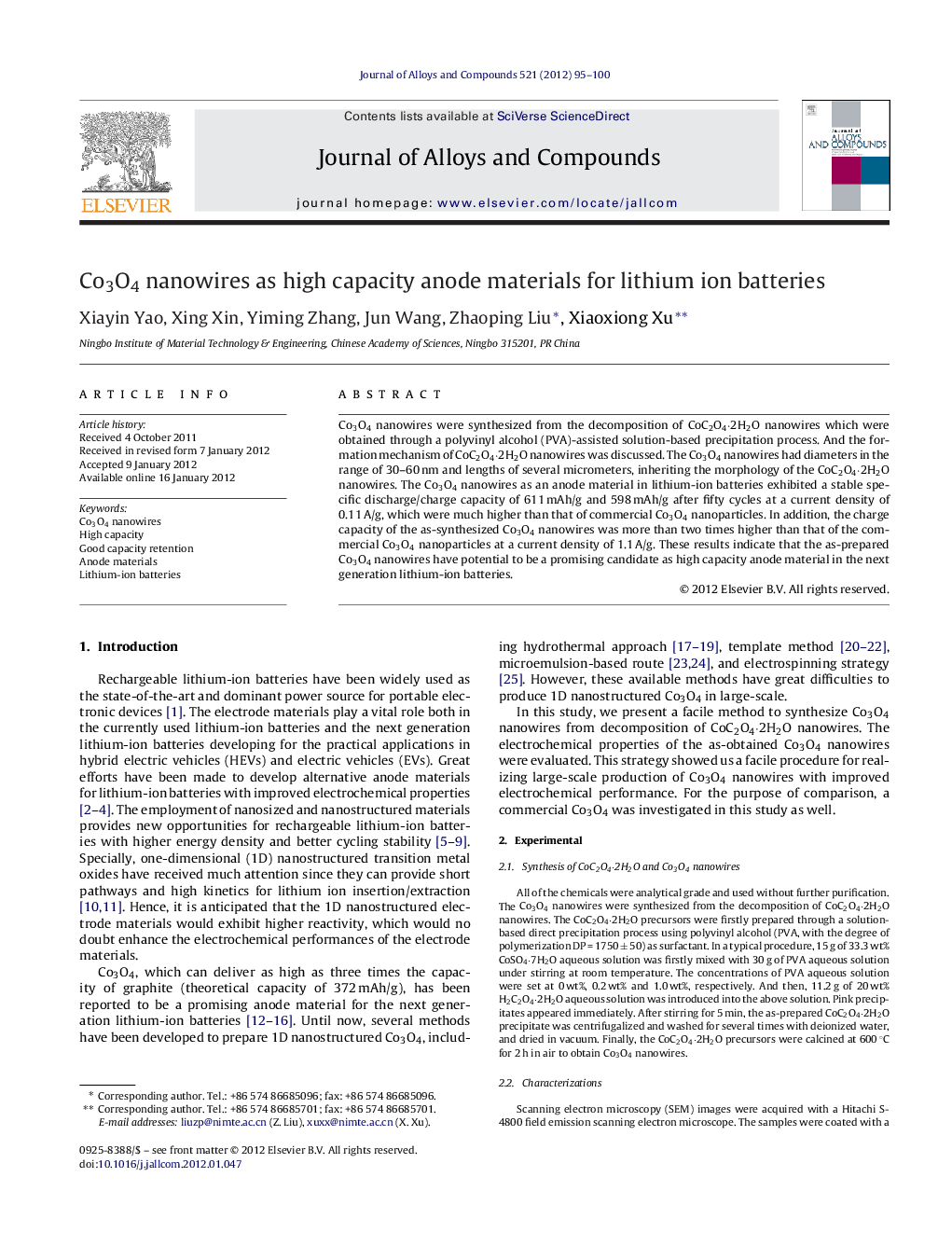| Article ID | Journal | Published Year | Pages | File Type |
|---|---|---|---|---|
| 1616264 | Journal of Alloys and Compounds | 2012 | 6 Pages |
Co3O4 nanowires were synthesized from the decomposition of CoC2O4·2H2O nanowires which were obtained through a polyvinyl alcohol (PVA)-assisted solution-based precipitation process. And the formation mechanism of CoC2O4·2H2O nanowires was discussed. The Co3O4 nanowires had diameters in the range of 30–60 nm and lengths of several micrometers, inheriting the morphology of the CoC2O4·2H2O nanowires. The Co3O4 nanowires as an anode material in lithium-ion batteries exhibited a stable specific discharge/charge capacity of 611 mAh/g and 598 mAh/g after fifty cycles at a current density of 0.11 A/g, which were much higher than that of commercial Co3O4 nanoparticles. In addition, the charge capacity of the as-synthesized Co3O4 nanowires was more than two times higher than that of the commercial Co3O4 nanoparticles at a current density of 1.1 A/g. These results indicate that the as-prepared Co3O4 nanowires have potential to be a promising candidate as high capacity anode material in the next generation lithium-ion batteries.
► The Co3O4 nanowires are synthesized from decomposition of CoC2O4·2H2O nanowires. ► The synthesis procedure shows us a facile and highly productive strategy. ► The Co3O4 nanowires are suitable as a promising anode material for LIBs. ► High capacity and good cycling stability are achieved for the Co3O4 nanowires.
